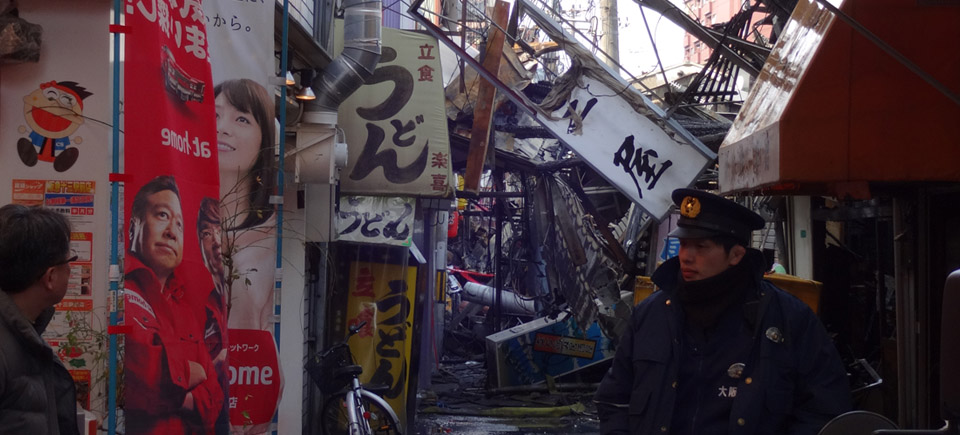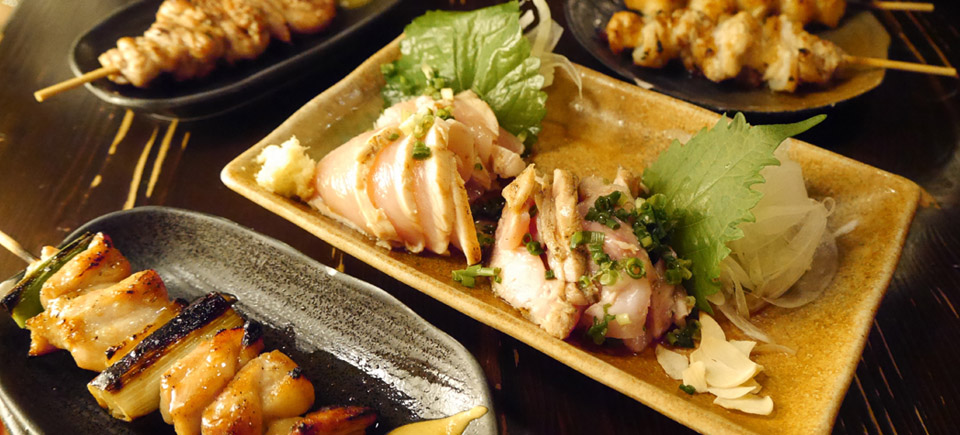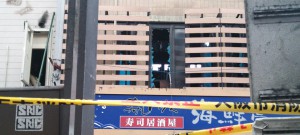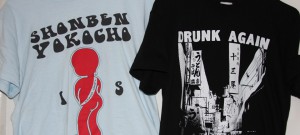Feature
The Plight of Tommy Town
Last March, fire ravaged 39 businesses in a neighborhood known and loved for its cheery culture, and boozy alleyways. A year on, shop by shop, Tommy Town is coming back to life.
(Above Image: Shigeru Morita)
On the dawn of March 7th, 2014, a burning cigarette was carelessly discarded outside an izakaya in the cozy, Osakan drinking district of Juso’s “Tommy Town”. Embers caught tinder, and soon flames were spreading up the alleyway, feeding on restaurants and bars. Heat shattered the windows and fried the machinery of buildings on the other side of the alley’s walkway. As the sun rose, so did the fire, looming over the main plaza, lapping at Hankyu Juso Station’s west gates.
Kevin O’Shea, formally a local teacher, recalls “the school area being filled with smoke and helicopters everywhere.” O’Shea, a popular expat vlogger, raced towards the chaos, capturing the experience on video.
Emergency personnel halted O’Shea’s investigation 100 yards short of the fire. He was left filming amongst other onlookers, fretting from afar over the continuous eruption of smoke from the center of Tommy Town.
No one was hurt, largely due to the early hour, but Tommy Town was left in ruin. Thirty-nine Tommy Town businesses burned; more than a third of the Tommy Town Store Association, many to ashes, many uninsured.
Shortly thereafter, a structural collapse compounded the damage, leaving the surviving stores along its lessdamaged side, as well as Juso Station’s west gates, inaccessible for months. Customer attrition followed, and then the loss of employees.
The personalities of Tommy Town began to vanish, leaving the salvage of the neighborhood’s structure and spirit to the handful who remembered its boozy beginnings. Hachiro Nakata, six-year leader of the Juso Tommy Town Store Association and 35-year owner of the popular Kiyasu sweets company, has endeavored to be a conduit from past to present for Tommy Town.
Tommy Town commemorated its beginnings with a statue of a boy, named Tommy, smirking as he pees in shameless nudity, presumably not in a toilet.
Nakata’s father established Kiyasu in 1947, when Tommy Town was springing from the rubble of WWII, largely as a collection of ramshackle eateries and izakayas. Establishments were thrown together without permits, primarily of wood, and huddled closely (factors that contributed to the fire’s spread). Bathrooms were a non-existent luxury. With all the cheap alcohol being consumed, the neighborhood earned the nickname Shoben Yokocho “Piss Alley” for its high volume of public urination.
Though Tommy Town eventually fell in line with the law and built bathrooms, its legacy of back-alley antics and its status as Osaka’s dive bar alternative endured the decades. Never ashamed of its past, in 2008, Tommy Town commemorated its beginnings with a statue of a boy, named Tommy, smirking as he pees in shameless nudity, presumably not in a toilet. Nakata casts Tommy Town in an unpretentious light, laughing and admitting “not high class restaurants, but you could feel at ease to enter.”
I went to visit Nakata, now 69 years old, meeting him in Tommy Town’s main plaza just outside of Kiyasu, which was spared the flames of almost a year ago. Nakata watched pensively, letting a sprightly circus tune from nearby fill in his silences. I was skeptical of the supposed decline in business and atmosphere, noting the people queuing up for his traditional sweets and bustling through the plaza, or stopping to take pictures with Tommy (his nakedness affectionately covered with a small cape for the frigid holiday season).
Nakata, perhaps sensing my doubt, lead me from the plaza’s throng, veering down the burned alleyway. The alley’s left-hand side was dotted with red-cheeked store owners hanging out of their stores, several only recently reopened. The row is blighted by as many barred stores as operating storefronts, some still charred. The right-hand side is only an expanse of dirt and blackened floors.
“It is more quiet, less lively, less people … even now at the end of the year,” Nakata says.
Nakata and the other store owners have been exhaustive in their campaign to resuscitate the heart of Tommy Town. Nakata reached out to donors like Mizuho and resident comedian “Masa,” of the comedy duo Tommys, to raise more than ¥16 million. The popular Juso club “Fandango” joined the fundraising through the sales of neighborhood-themed merchandise like t-shirts labelled “Drunk again … Juso”. The merchandise, as well as street donations, raised ¥14 million and demonstrated that Tommy Town can still be a profitable draw for locals. The combined ¥30 million was used to cover the costs of hauling the debris, laying the groundwork for the association’s next challenge; rebuilding.
Many want the reconstruction of the stores to stay true to their original likeness by using wood as the main building material and maintaining the original floor space. The government, though, is pushing for concrete or iron, which are far less susceptible to fire. Furthermore, the original buildings violate zoning laws by encroaching too far into the alleyway.
Nakata keeps pictures of his family in his office next to the video monitoring system he uses to watch over Tommy Town. It’s as though they’re all part of his family. He points to an early photograph of his father and speaks affectionately of him, “I am number two,” a reminder that he’s carrying a legacy. He points to a younger man in the office, engrossed in computers since we entered. “My son is number three.” His son looks up and laughs. Then Nakata shows me a picture of himself with his son and his grandson. “Maybe number four.”
Nakata may not seem bold, but his quiet resolve is stirring. Under his leadership, five stores have reopened and 15 more are set to reopen following the fire’s first anniversary. But Nakata is more concerned with the distance left to go. He took me to stand amid the charred ruins, 70 years after the war, reduced to rubble again. He nods slowly to himself, “This is a very high mountain to climb, like Everest. But this is my destiny.”
[box]
Why Tommy?
The kanji characters used to form Juso (十 jū – meaning ten) and (三 sō – meaning three), can also be read as To – Mi. Tommy. Got it?
[/box]

















